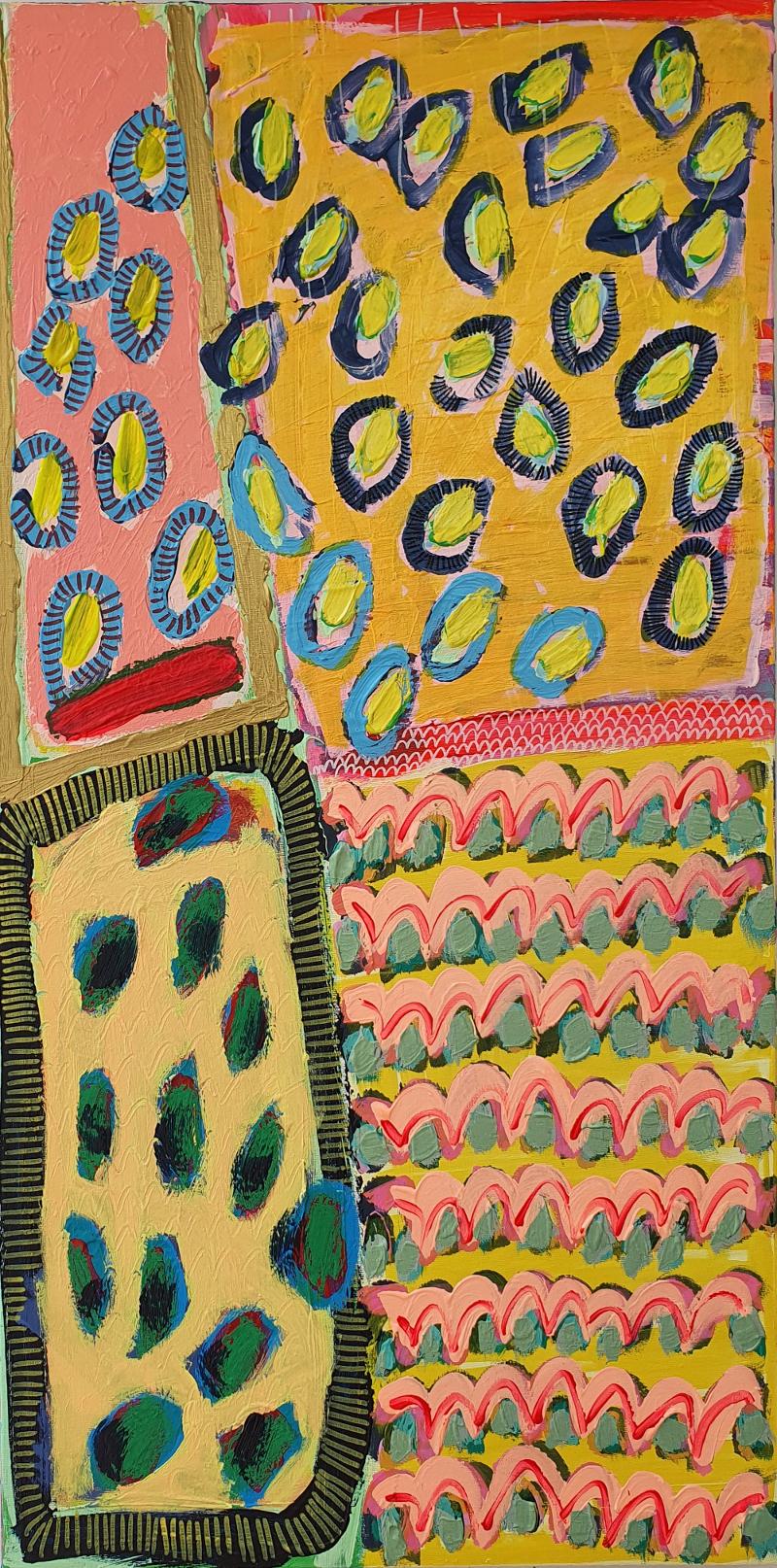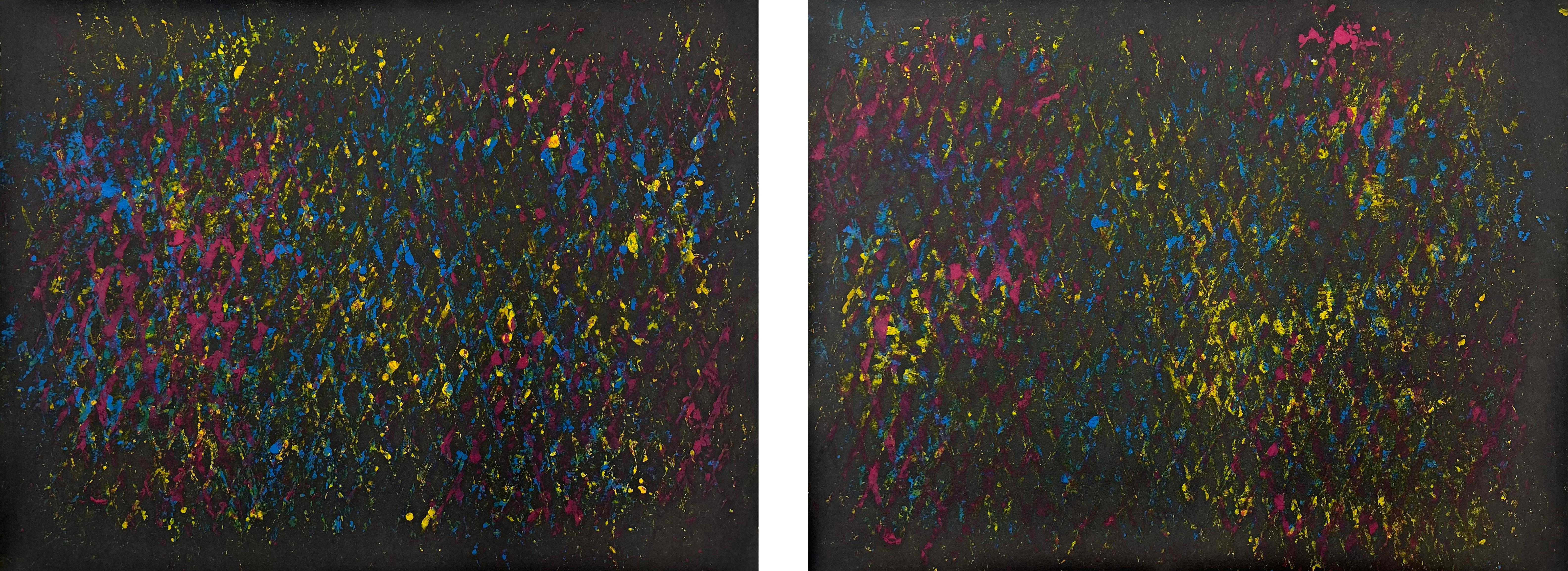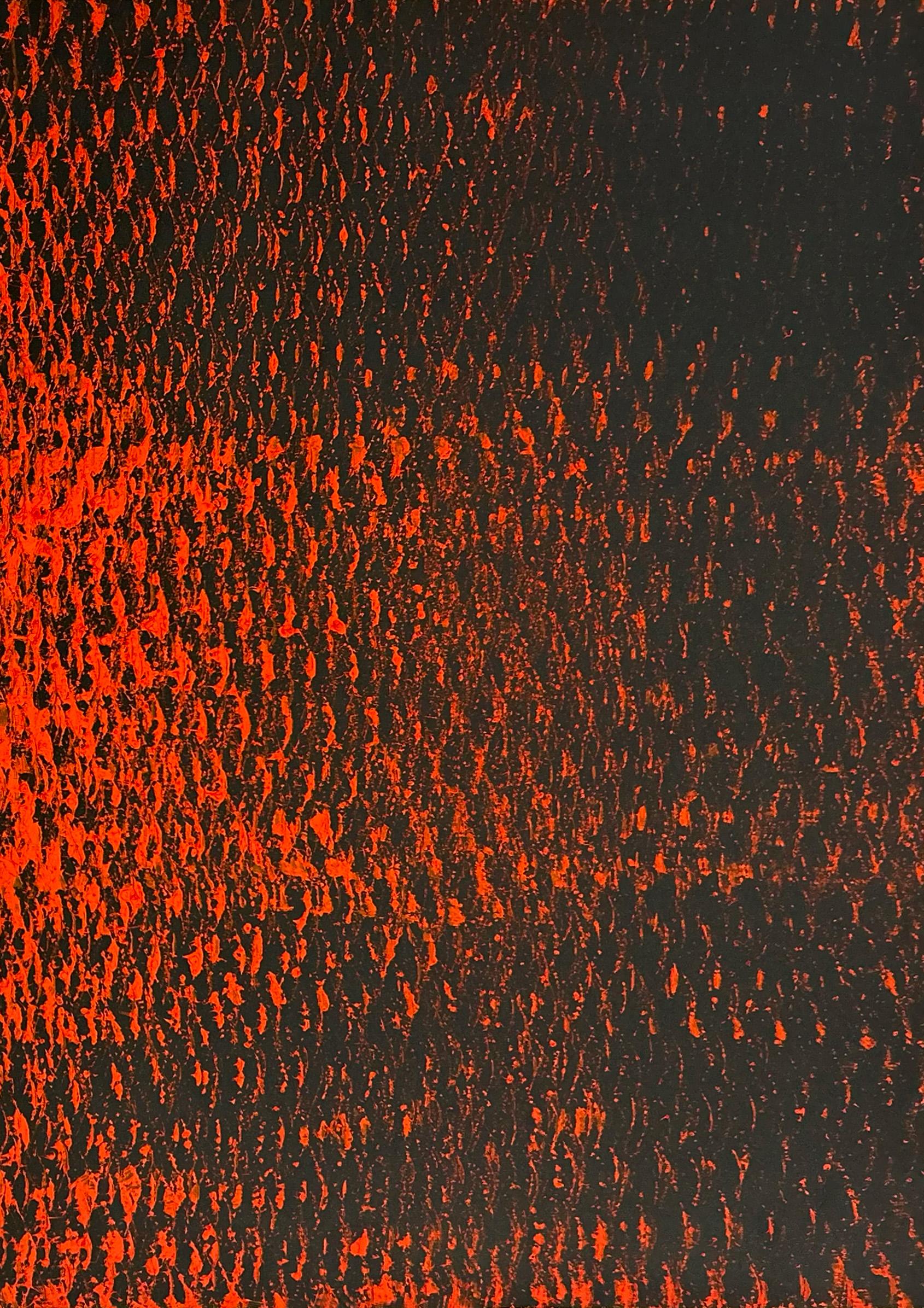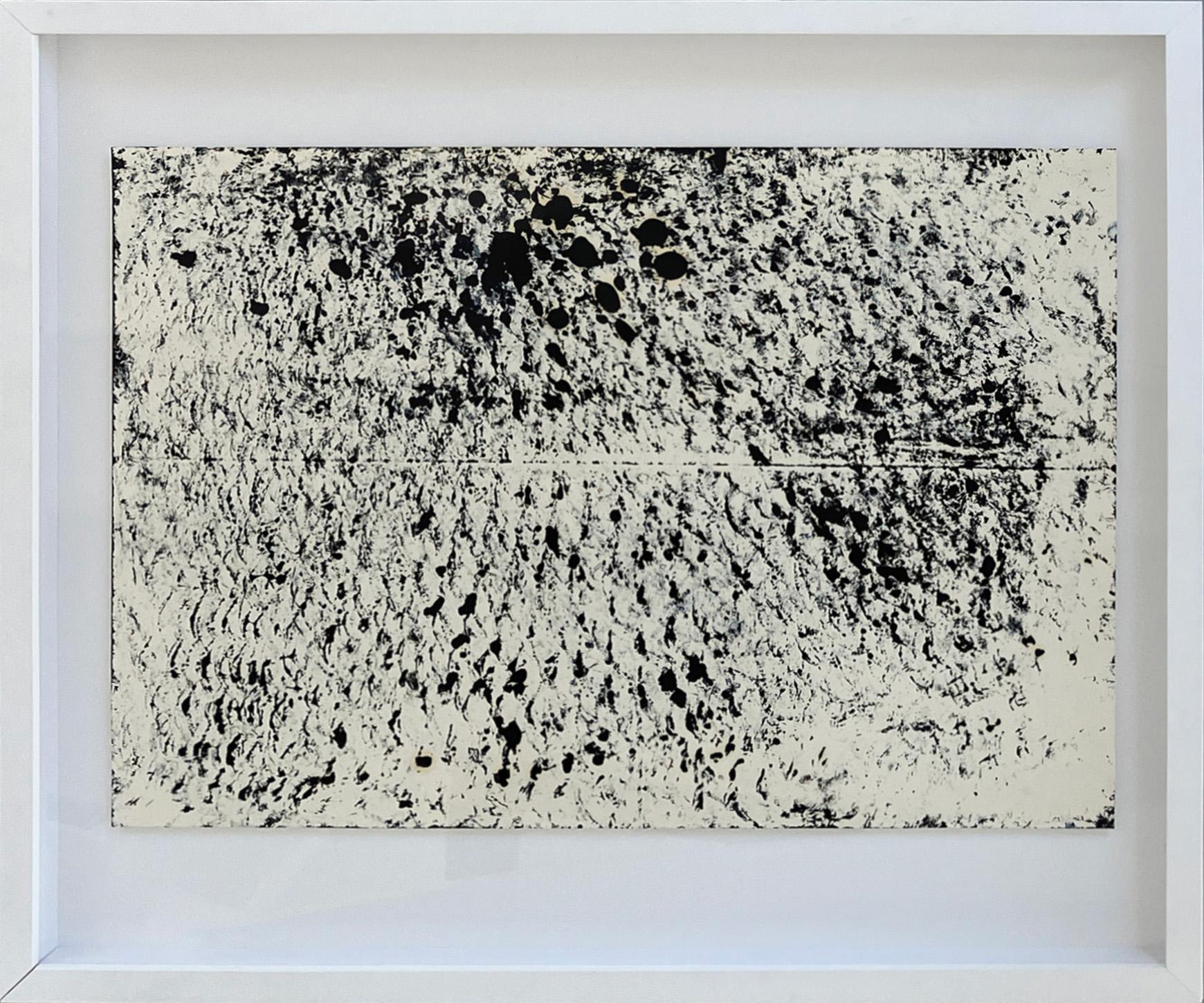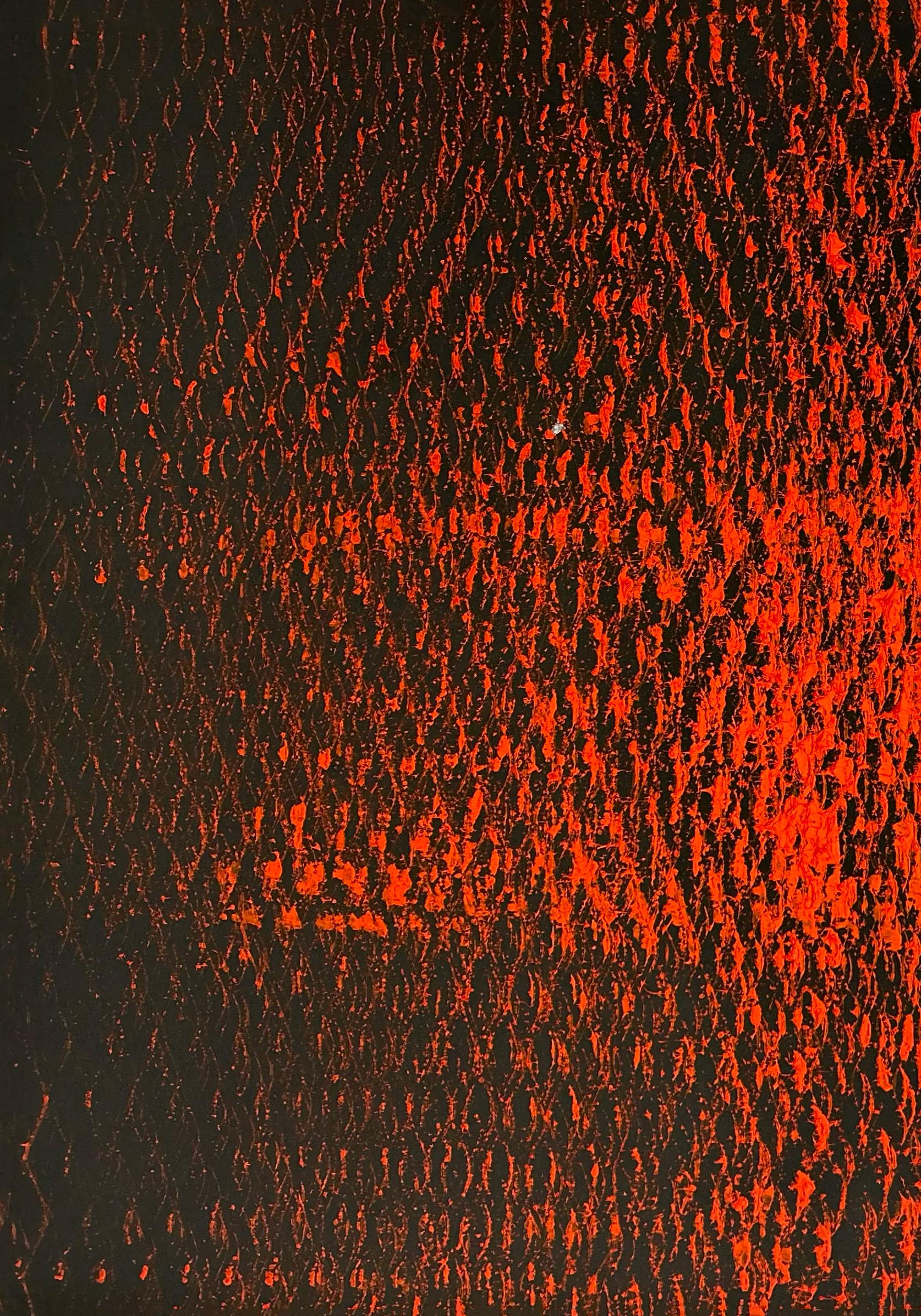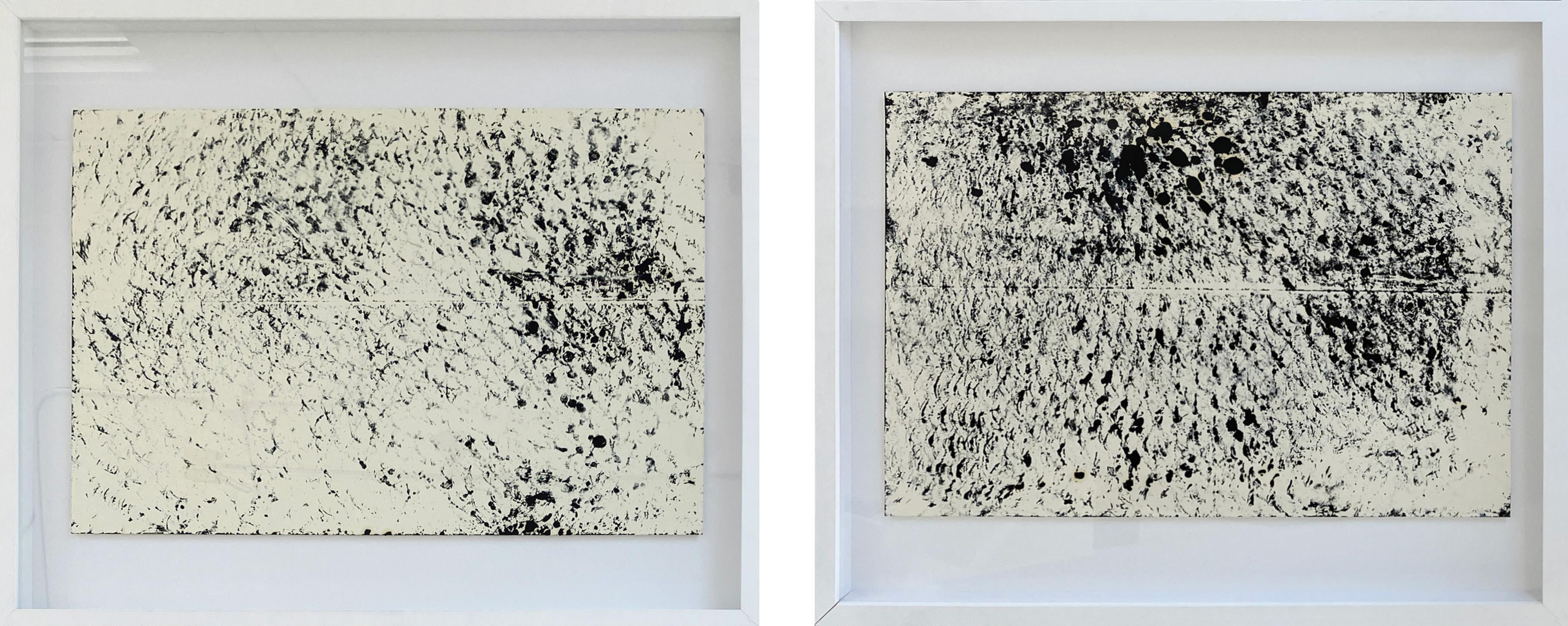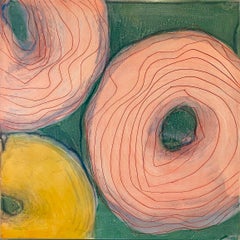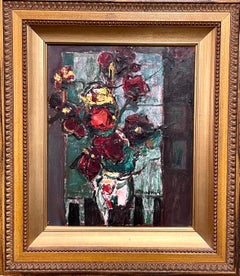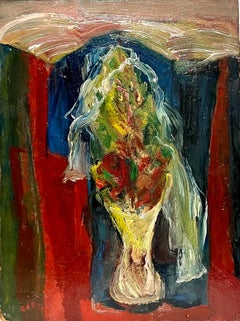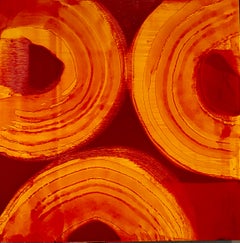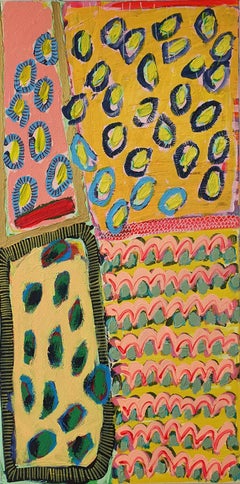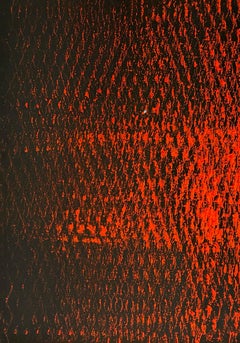Items Similar to Abstract Still Life Oil Painting with Ink Theresa Bernstein Flowers in Vase
Want more images or videos?
Request additional images or videos from the seller
1 of 11
Theresa BernsteinAbstract Still Life Oil Painting with Ink Theresa Bernstein Flowers in Vase1994
1994
About the Item
Theresa Bernstein, 1890 - 2002
Abstract Still Life Oil and Pen on Paper Painting (1994) by Theresa Bernstein
Frame: 26" X 22", Image: 18.5" X 14.75"
A Polish born American modernist figurative artist in the traditions of the Ashcan and New York Realism Schools, wife of William Meyerowitz. The artwork represents a still life with two flower vases. Signed by the artist and dated 1994 in the lower left.
Theresa Ferber Bernstein-Meyerowitz (1890 – 2002) was an American artist, writer, and supercentenarian born in Kraków, in what is now Poland, and raised in Philadelphia. She received her art training in Philadelphia and New York City. Over the course of nearly a century, she produced hundreds of paintings and other artwork, plus several books and journals.
Bernstein and her husband William Meyerowitz (a WPA, New deal artist), who was also an artist, lived and worked in Manhattan and Gloucester, Massachusetts. She painted portraits and scenes of daily life, plus reflections of the major issues of her time, in a modern style that evolved from realism to expressionism. She was active in several art associations and promoted her husband's work as well as her own. Her artworks are found in dozens of museums and private collections in the United States and abroad. She remained active all her life and was honored with a solo exhibition of 110 art works to celebrate her 110th birthday.
Bernstein also authored several books, including a biography of her husband and a journal about their many trips to Israel.
She died in 2002, just a couple of weeks short of her 112th birthday.
Theresa Ferber Bernstein was born in Cracow, Poland, on March 1, 1890. She was the only child of Isidore Bernstein, a Jewish textile manufacturer, and his wife Anne (née Ferber) Bernstein, an accomplished pianist. The family emigrated to the United States when Theresa was one year old. She showed an early interest in art and began learning to draw and paint at a young age. As a young woman, she traveled several times with her mother to Europe, where she was impressed by artists of the new Expressionist movement like Wassily Kandinsky, Franz Marc, and Edvard Munch.
Bernstein graduated from the William D. Kelley School in Philadelphia in June 1907, at the age of 17. The same year, she received a scholarship to the Philadelphia School of Design for Women, now Moore College of Art & Design, where she studied with Harriet Sartain, Elliott Daingerfield, Henry B. Snell, Daniel Garber and others. She graduated in 1911 with an award for general achievement (the college awarded her an honorary doctorate in 1992). In 1912, she settled in Manhattan and enrolled at the Art Students League, where she took life and portraiture classes with William Merritt Chase.
She met her future husband William Meyerowitz, also an artist, in 1917, and they married in Philadelphia on February 7, 1919. Their only child, a girl named Isadora, died in infancy. They lived in New York City and began spending summers in Gloucester, Massachusetts in the 1920s. In 1923, the couple traveled abroad together.
In the beginning, Bernstein's sales and reviews were far better than her husband's, but over time, her reputation waned due to a decreased interest in realistic subjects, even though they presented themselves as a "painting couple." During the Great Depression, Bernstein and her husband continued to teach in their studios in Manhattan and Gloucester and sold graphics to supplement their income. They became involved in the Zionist movement, and after the establishment of the State of Israel, they visited the country 13 times over 30 years. Until her husband's death in 1981, Bernstein promoted his artwork while creating her own. She stated that she did not feel it necessary to compete with him, as she was not competitive by nature. Bernstein and Meyerowitz were close to two of their nieces, Laura Nyro and Barbara Meyerowitz (aka Barbara DeAngelis), and supported their musical education. Following the death of her husband, Bernstein developed a close relationship with DeAngelis' youngest son, Keith Carlson, who documented their relationship for a website in the artist's name that was created by the City University of New York.
In 1913, Bernstein attended the Armory Show, the first large exhibition of modern art in America. Bernstein admired the style of Robert Henri, founder of the Ashcan School of American realism, and his way of depicting the everyday drama of the city. She was also influenced by John Sloan, Stuart Davis and others of the movement. According to art historian Gail Levin, Bernstein was for a time more popular than well-known realist Edward Hopper, although Bernstein's style over time tended more toward expressionism. However, unlike abstract artists, Bernstein remained committed to figuration, choosing always to connect with real life and people. In her paintings, Bernstein depicted the major issues of her time: the women's suffrage movement, World War I, jazz, the plight of immigrants, unemployment, and racial discrimination. She also painted portraits of her husband and other people, including Polish musician and politician Ignacy Jan Paderewski, jazz musician Charlie Parker, and entertainer Judy Garland. Her studio near Bryant Park and Times Square allowed her to paint a cross-section of New Yorkers, using large brushstrokes and bold colors to depict the vitality of her subjects. At Coney Island and later during her summers in Gloucester, she painted harbors, beaches, fish, and still lifes.
Early reviewers praised her "man's vision," while recent scholars have found that she had a "decidedly feminine sensibility." In the male-dominated art world of her time, Bernstein, like many women artists, was frequently overlooked. To try to avoid discrimination, she often signed her works using "T. Bernstein" or just her surname.
Bernstein was part of the Philadelphia Ten, an influential group of female artists. She was also a member of the National Association of Women Artists, the Society of American Graphic Artists and the North Shore Art Association. Her works were exhibited extensively with the National Academy of Design and the Society of Independent Artists, which she co-founded.
Selected exhibitions
1919: Bernstein's first solo exhibition at the Milch Gallery in New York City.
1930: The Baltimore Museum of Art held simultaneous solo exhibitions for Bernstein and her husband to help them build their individual careers.
1990: Echoes of New York: The Paintings of Theresa Bernstein, curated by art historian Michele Cohen, Museum of the City of New York.
1998: Theresa Bernstein: A Seventy-Year Retrospective, Joan Whalen Fine Art, New York City
2000: Theresa Bernstein: An Early Modernist – Solo exhibition of 110 of Bernstein's art works held to celebrate her 110th birthday and attended by the artist, Jo-An Fine Art in New York City.
2014: Theresa Bernstein: A Century in Art: Retrospective exhibition of 44 of her works from public and private collections, organized by art historian Gail Levin, Franklin & Marshall College in Lancaster, Pennsylvania.
In all, Bernstein had more than 40 solo exhibitions over her lifetime.
Collections
Bernstein's artwork is held by a number of museums and other permanent collections, including:
The Phillips Collection
The Jewish Museum
The National Gallery of Art
The Smithsonian American Art Museum
The Harvard Art Museums
The Metropolitan Museum of Art
The New York Public Library
The Boca Raton Museum of Art in Florida.
Books
William Meyerowitz: The Artist Speaks, a biography of Bernstein's husband
The Poetic Canvas
The Journal
Israeli Journal, covering her many trips to Israel and reflections on her Jewish heritage (originally published in 1994
About the Seller
4.9
Platinum Seller
Premium sellers with a 4.7+ rating and 24-hour response times
Established in 1995
1stDibs seller since 2014
1,744 sales on 1stDibs
Typical response time: 2 hours
- ShippingRetrieving quote...Shipping from: Surfside, FL
- Return Policy
Authenticity Guarantee
In the unlikely event there’s an issue with an item’s authenticity, contact us within 1 year for a full refund. DetailsMoney-Back Guarantee
If your item is not as described, is damaged in transit, or does not arrive, contact us within 7 days for a full refund. Details24-Hour Cancellation
You have a 24-hour grace period in which to reconsider your purchase, with no questions asked.Vetted Professional Sellers
Our world-class sellers must adhere to strict standards for service and quality, maintaining the integrity of our listings.Price-Match Guarantee
If you find that a seller listed the same item for a lower price elsewhere, we’ll match it.Trusted Global Delivery
Our best-in-class carrier network provides specialized shipping options worldwide, including custom delivery.More From This Seller
View All"AKEE" Oil Painting, Marylyn Dintenfass Modernist Abstract Expressionist Pop Art
By Marylyn Dintenfass
Located in Surfside, FL
Provenance: Babcock Galleries (bears their label verso.) signed verso with artists monogram signature.
Marylyn Dintenfass (born 1943) is an American painter, printmaker, and sculptor. She is primarily known for her oil paintings, which use a dynamic color palette and lexicon of gestural imagery to explore dualities in the human experience and everyday sensual pleasures.
Marylyn Dintenfass was born in 1943 in Brooklyn, New York and spent most of her early years in Brooklyn and then Long Island. She attended Queens College, and graduated in 1965 with a bachelor's degree in Fine Arts. During this time, the artist worked with Abstract Expressionist painter John Ferren and muralist Barse Miller. Marilyn Dintenfass explored new media and developed her own reaction to abstract expressionism with color, line, and gesture. Dintenfass acquired an appreciation for a broad range of materials that led to major sculpture installations composed of ceramic materials, steel, lead, wood, wax and a variety of pigments and epoxies.
Following a tour of museums in Amsterdam, Paris and Rome, the artist made her way to Jerusalem in 1966. During this journey, the artist worked with painter Ruth Bamberger, studied etching and mingled with the artists and intellectuals of the city. The result was Dintenfass's first architectural commission, to design the “Pop Op Disco,” Jerusalem's first disco. This commission allowed her to work with an array of materials to employ shapes, surfaces, textures, colors, and lights, all of which coalesced in her consciousness that would become important components of her mature personal visual vocabulary. Dintenfass also married and started her family during these years.
Art critic Meredith Mendelsohn writes, “Dintenfass uses luscious colors, repetitive forms, and a gestural intensity that combines Abstract Expressionism and Pop Art.”
Dintenfass often works with oil paint on wooden panels fragmented into parts of a grid. "After completing a painting," writes curator and critic Lilly Wei in a study of Dintenfass' work, "Dintenfass literally takes it apart, treating each panel as a discrete entity, exchanging panels between works in an aesthetic mix and match as she searches for interactions and relationships of color and form that satisfy her sense of visual excitement, sparked by the frisson of the dissonant." In an interview with critic Irving Sandler, Dintenfass speaks of the grid as a necessary, formal restraint for the passion of the gestural marks it contains. Joyce Robinson illuminates; “Dintenfass is at heart, though, a painter, and the grid, with its reference to and notion of modular parts, has remained central to her artistic enterprise, functioning as a kind of Apollonian matrix holding in check the exuberant, vividly colored abstractions of this essentially Dionysian artist.”
Lilly Wei adds, "Ultimately, however, Dintenfass is more sensualist than theorist, and her paintings owe much of their allure to their materiality and the dazzle of color. Her array of ripe, radiant, saturated hues—a palette of gorgeous diversity—can be silkily smooth and nuanced; boldly exuberant; or edgily, feverishly discordant."
The artist's abstract imagery usually appears in her work as various forms of stripes or circles arranged across translucent layers of alternating matte and high gloss textures. In a conversation with gallery owner, John Driscoll, Dintenfass likens these symbols to language that predates the written word, saying her "work relates to communication through the visceral channel." Rooted in autobiography, the artist's paintings also examine the contrast between what she calls the “micro” and the “macro.” At times the shapes simultaneously resemble cells under a microscope and visions of the cosmos. Dintenfass' themes explore the dualities of everyday pleasures; depending on the focus of a series, her symbols might conjure characters, candies, car wheels, or paint itself.
Although known for her paintings, Dintenfass was first recognized for her sculptural installations. Her innovative use of mixed media (ceramics, epoxies, wax, pigments, steel, lead, wood, etc.) transformed understanding of what a “ceramic” work of art could be and firmly fixed her position and influence among a generation of mixed media artists expanding the traditional definitions and boundaries of object and materials to create modern art. The results came as architectural reliefs and installation sculpture unique to her organic but structural personal style. Similar to her paintings, Dintenfass developed a modular language of symbols, amalgams of line and curve, which she would combine to create detailed pictographic languages all her own, what she has called “organic alphabets.” As Ted Castle relates, “Ideas are furtive elements, stolen from the matrix, so as to be reformed by human genius into something unforeseen—a poem, a painting, a game of dominoes, a television set, a brick, a tile, a cup. Marylyn Dintenfass is a master of the transformation of ideas into palpable form.”
Dintenfass has also been commissioned to create many large-scale installations, including works for the State of Connecticut Superior Courthouse; the Port Authority of NY 42nd Street Bus Terminal; IBM in Atlanta, Charlotte, and San Jose; The Baltimore Federal...
Category
Early 2000s Abstract Abstract Paintings
Materials
Oil, Panel
Polish Israeli Abstract Flowers Tel Aviv Modernist Vibrant Floral Oil Painting
By Zvi Mairovich
Located in Surfside, FL
Bold, colorful abstract bouquet of flowers in a vase.
25.5 X 20 inches, framed. 16 X 12.5 canvas in original carved wood frame.
Provenance: Gallery Hadassa (Klachkin) Tel Aviv. Bears label remnant verso.
Zvi Mairovich (1911-1974) was one of the most important Israeli abstract painters. Born in Krosno Poland, he moved to Berlin in 1929, studying painting with Karl Hofer...
Category
20th Century Abstract Abstract Paintings
Materials
Canvas, Oil
American Abstract Expressionist Flowers Oil Painting Norman Carton WPA Artist
By Norman Carton
Located in Surfside, FL
Norman Carton (1908 – 1980) was an American artist and educator known for abstract expressionist art. He was born in the Ukraine region of Imperial Russia and moved to the United States in 1922 where he spent most of his adult life.
A classically trained portrait and landscape artist, Carton also worked as a drafter, newspaper illustrator, muralist, theater set designer, photographer, and fabric designer and spent most of his mature life as an art educator. Carton showed in and continues to be shown in many solo and group exhibitions. His work is included in numerous museums and private collections throughout the world.
Norman Carton was born in the Dnieper Ukraine territory of the Russian Empire in 1908. Escaping the turbulence of civil war massacres, he settled in Philadelphia in 1922 after years of constant flight. While attending the Pennsylvania Museum School of Industrial Art, Carton worked as a newspaper artist for the Philadelphia Record from 1928 to 1930 in the company of other illustrator/artists who had founded the Ashcan School, the beginnings of modern American art. From 1930 to 1935, he studied at the Pennsylvania Academy of Fine Arts under Henry McCarter, who was a pupil of Toulouse-Lautrec, Puvis de Chavanne, and Thomas Eakins. Arthur Carles, especially with his sense of color, and the architect John Harbison also provided tutelage and inspiration. Following his time at the Pennsylvania Academy of Fine Arts, Carton studied at the Barnes Foundation from 1935 to 1936 where he was influenced by an intellectual climate led by visiting lecturers John Dewey and Bertrand Russell as well as daily access to Albert C. Barnes and his art collection.
Carton was awarded the Cresson Traveling Scholarship in 1934 which allowed him to travel through Europe and study in Paris. There he expanded his artistic horizons with influences stemming from Henri Matisse, Pablo Picasso, Chaim Soutine, and Wassily Kandinsky. While at the Pennsylvania Academy of Fine Arts, Carton was also awarded the Toppan Prize for figure painting as well as the Thouron Composition Prize. He received numerous commissions as a portrait artist, social realist, sculptor, and theatrical stage designer as well as academic scholarships. During this time, Carton worked as a scenery designer at Sparks Scenic Studios, a drafter at the Philadelphia Enameling Works, and a fine art lithographer.
From 1939 to 1942, the Works Progress Administration (WPA) Federal Art Project employed Carton as a muralist and easel artist. He collaborated with architect George Howe. The WPA commissioned Carton to paint major murals at the Helen Fleischer Vocational School for Girls in Philadelphia, the Officers’ Club at Camp Meade Army Base in Maryland, and in the city of Hidalgo, Mexico. Throughout the 1940s, Carton exhibited and won prizes for his semi-abstract Expressionist and Surrealist paintings. He socialized with and was inspired by Émile Gauguin and Fernand Leger. During World War II, Carton was a naval structural designer and draftsman at the Cramps...
Category
Mid-20th Century Abstract Expressionist Still-life Paintings
Materials
Oil, Board
Abstract Red Persimmon Oil Painting on Panel Marylyn Dintenfass Modernist
By Marylyn Dintenfass
Located in Surfside, FL
Provenance: Babcock Galleries (bears their label verso. signed verso with artists monogram signature.
Marylyn Dintenfass (born 1943) is an American painter, printmaker, and sculptor. She is primarily known for her oil paintings, which use a dynamic color palette and lexicon of gestural imagery to explore dualities in the human experience and everyday sensual pleasures.
Marylyn Dintenfass was born in 1943 in Brooklyn, New York and spent most of her early years in Brooklyn and then Long Island. She attended Queens College, and graduated in 1965 with a bachelor's degree in Fine Arts. During this time, the artist worked with Abstract Expressionist painter John Ferren and muralist Barse Miller. Marilyn Dintenfass explored new media and developed her own reaction to abstract expressionism with color, line, and gesture. Dintenfass acquired an appreciation for a broad range of materials that led to major sculpture installations composed of ceramic materials, steel, lead, wood, wax and a variety of pigments and epoxies.
Following a tour of museums in Amsterdam, Paris and Rome, the artist made her way to Jerusalem in 1966. During this journey, the artist worked with painter Ruth Bamberger, studied etching and mingled with the artists and intellectuals of the city. The result was Dintenfass's first architectural commission, to design the “Pop Op Disco,” Jerusalem's first disco. This commission allowed her to work with an array of materials to employ shapes, surfaces, textures, colors, and lights, all of which coalesced in her consciousness that would become important components of her mature personal visual vocabulary. Dintenfass also married and started her family during these years.
Art critic Meredith Mendelsohn writes, “Dintenfass uses luscious colors, repetitive forms, and a gestural intensity that combines Abstract Expressionism and Pop Art.”
Dintenfass often works with oil paint on wooden panels fragmented into parts of a grid. "After completing a painting," writes curator and critic Lilly Wei in a study of Dintenfass' work, "Dintenfass literally takes it apart, treating each panel as a discrete entity, exchanging panels between works in an aesthetic mix and match as she searches for interactions and relationships of color and form that satisfy her sense of visual excitement, sparked by the frisson of the dissonant." In an interview with critic Irving Sandler, Dintenfass speaks of the grid as a necessary, formal restraint for the passion of the gestural marks it contains. Joyce Robinson illuminates; “Dintenfass is at heart, though, a painter, and the grid, with its reference to and notion of modular parts, has remained central to her artistic enterprise, functioning as a kind of Apollonian matrix holding in check the exuberant, vividly colored abstractions of this essentially Dionysian artist.”
Lilly Wei adds, "Ultimately, however, Dintenfass is more sensualist than theorist, and her paintings owe much of their allure to their materiality and the dazzle of color. Her array of ripe, radiant, saturated hues—a palette of gorgeous diversity—can be silkily smooth and nuanced; boldly exuberant; or edgily, feverishly discordant."
The artist's abstract imagery usually appears in her work as various forms of stripes or circles arranged across translucent layers of alternating matte and high gloss textures. In a conversation with gallery owner, John Driscoll, Dintenfass likens these symbols to language that predates the written word, saying her "work relates to communication through the visceral channel." Rooted in autobiography, the artist's paintings also examine the contrast between what she calls the “micro” and the “macro.” At times the shapes simultaneously resemble cells under a microscope and visions of the cosmos. Dintenfass' themes explore the dualities of everyday pleasures; depending on the focus of a series, her symbols might conjure characters, candies, car wheels, or paint itself.
Although known for her paintings, Dintenfass was first recognized for her sculptural installations. Her innovative use of mixed media (ceramics, epoxies, wax, pigments, steel, lead, wood, etc.) transformed understanding of what a “ceramic” work of art could be and firmly fixed her position and influence among a generation of mixed media artists expanding the traditional definitions and boundaries of object and materials to create modern art. The results came as architectural reliefs and installation sculpture unique to her organic but structural personal style. Similar to her paintings, Dintenfass developed a modular language of symbols, amalgams of line and curve, which she would combine to create detailed pictographic languages all her own, what she has called “organic alphabets.” As Ted Castle relates, “Ideas are furtive elements, stolen from the matrix, so as to be reformed by human genius into something unforeseen—a poem, a painting, a game of dominoes, a television set, a brick, a tile, a cup. Marylyn Dintenfass is a master of the transformation of ideas into palpable form.”
Dintenfass has also been commissioned to create many large-scale installations, including works for the State of Connecticut Superior Courthouse; the Port Authority of NY 42nd Street Bus Terminal; IBM in Atlanta, Charlotte, and San Jose; The Baltimore Federal...
Category
Early 2000s Abstract Abstract Paintings
Materials
Oil, Panel
Abstract Flowers Oil Painting Study for Amaryllis
By Nobu Fukui
Located in Surfside, FL
This piece is done in a sort of sgraffito technique with the flowers sort of etched in the paint.
Born in Tokyo, Japan, Nobu Fukui Came to New York where he became a US citizen. From 1964 - 65, he studied at the Art Students League in New York City. His work has been widely exhibited in New York and California.
He had his first one-man show in this country in 1965 at the Daniels Gallery in New York. That same year his works were included in the Japanese Artists in Europe and America Exhibition at the National Museum of Modern Art in Tokyo. This was followed by numerous exhibits and one-man shows in various cities in the United States and Japan - New York, Indianapolis, Ann Arbor, Pittsburgh and Yokohama, for example.
Fukui's works are formal, dynamic and abstract. Form functions minimally as a symmetrical structure so as to focus on his real interest in color interaction. Fukui's work is represented in the collections of The Museum of Modern Art, New York City; Larry Aldrich Museum, Conn; Dartmouth College, NH; New York State University, Potsdam NY; Roosevelt College, Chicago IL; Westinghouse Corp, The National Museum of Modern Art, Tokyo, Japan; The New Britain Museum of American Art, New Britain, CT; The Indianapolis Museum of Art, Indianapolis, IN and The Eli and Edythe Broad Art Museum, East Lansing, MI, Indianapolis Museum of Art; National Museum of Modern Art, Tokyo and National Museum of Modern Art, Kyoto, Japan; amongst others. and other private collections. He has exhibited widely, including solo shows at Daniels Gallery, Max Hutchinson Gallery, Marisa Del Re Gallery, and Steven Haller...
Category
1990s Abstract Abstract Paintings
Materials
Canvas, Oil, Panel
Polish Israeli Abstract Vibrant Cityscape Tel Aviv Modernist Painting Mairovich
By Zvi Mairovich
Located in Surfside, FL
Bold, colorful abstract cityscape of Tel Aviv
15 X 19 inches including mat (needs new mat).
painting is 10.5 X 14.5
Provenance: prominent South Florida art...
Category
20th Century Abstract Abstract Paintings
Materials
Oil, Gouache, Board
You May Also Like
#600, Abstract Painting, Original Bright Artwork, Geometric Painting, Affordable
By Jessie Woodward
Located in Deddington, GB
Jessie’s instinctive way of working explores the language of paint and mark making to evoke emotions in the viewer, aiming to communicate how pure abstract work can generate visual e...
Category
21st Century and Contemporary Abstract Abstract Paintings
Materials
Canvas, Oil, Acrylic, Pen
CMYK I and II, Expanded Metal Painting. Diptych
Located in Miami Beach, FL
His The panel paintings "Expanded Metal Paintings" are the closest to the classic art of painting. Firstly paint is applied by a brush on a primed canvas. Then wire mesh is dunked in...
Category
2010s Abstract Abstract Paintings
Materials
Paper, Oil
Red and Black I, Expanded Metal Painting
Located in Miami Beach, FL
His The panel paintings "Expanded Metal Paintings" are the closest to the classic art of painting. Firstly paint is applied by a brush on a primed canvas. Then wire mesh is dunked in...
Category
2010s Abstract Abstract Paintings
Materials
Oil, Paper
Blue and White I & II Diptych, Framed. Expanded Metal Painting.
Located in Miami Beach, FL
His The panel paintings "Expanded Metal Paintings" are the closest to the classic art of painting. Firstly paint is applied by a brush on a primed canvas. Then wire mesh is dunked in...
Category
2010s Abstract Abstract Paintings
Materials
Paper, Oil
Red and Black I & II, Expanded Metal Painting. Diptych
Located in Miami Beach, FL
His The panel paintings "Expanded Metal Paintings" are the closest to the classic art of painting. Firstly paint is applied by a brush on a primed canvas. Then wire mesh is dunked in...
Category
2010s Abstract Abstract Paintings
Materials
Paper, Oil
Blue and White I. Framed. Expanded Metal Painting
Located in Miami Beach, FL
His The panel paintings "Expanded Metal Paintings" are the closest to the classic art of painting. Firstly paint is applied by a brush on a primed canvas. Then wire mesh is dunked in...
Category
2010s Abstract Abstract Paintings
Materials
Paper, Oil
Recently Viewed
View AllMore Ways To Browse
Flowers In Vase
Ink On Paper Flowers
Large Abstract Vase
Abstract Flower Vase
White Vase Flower Painting
Painting And Flowers And White Vase
Flower Painting Realistic
Flowers In A Vase Fine Art
Large Flowers In A Vase Paintings
Vase Of Flowers Painting Abstract
Henry Moore In America
Painting Signed Franklin
Large Oil Painting Portrait Of A Man Framed
European Oil Paintings Of Country Scenes
Jan Flowers
Franklin Oil Painting
Oil Painting Beach Harbor
Paintings Of Gloucester Massachusetts
